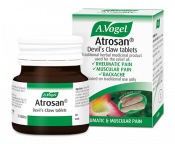What fruits are good for the muscles and joints?
From immune function to our eye health, fruit has a whole host of benefits, hence why we are encouraged to eat several portions every single day. How does fruit aid the muscles and joints specifically, though?
Let's take a look at the following fruits and discover their particular health benefits for the muscles and joints.
- Pomegranates
- Berries
- Cherries
1. Pomegranates
Pomegranates have long been appreciated for their irresistibly sweet taste and nutritional benefits. They are rich in potassium, iron and calcium, as well as vitamins A, B and C. Pomegranates are also a good source of fibre, which we all need to include in our diet to reduce the risk of serious conditions like type 2 diabetes and heart disease.
Recently, research has emerged that cites pomegranates as having some additional benefits for our muscles and joints. For example, pomegranates have been found to have anti-inflammatory effects, meaning they could, to some extent, help with conditions like arthritis which are characterised by inflammation in the joints.1
A 2014 study found that inflammatory markers in the blood declined when participants with type 2 diabetes drank pomegranate juice every day for 12 weeks.2
It's also known that pomegranates contain three times more antioxidants than green tea.3 Antioxidants are important in protecting the cells from free radical damage, which increases when inflammation is present.
It's not just the muscles and joints that can benefit from consuming pomegranates, though. Read our piece on the surprising health benefits of pomegranate for more ways this colourful fruit could help you!
My Top Tip:

"Juice tastes fresh and has improved my health and digestive system. Also delivers vitamins!"

2. Berries
Several varieties of berry can offer advantages for the muscles and joints.
Firstly, strawberries are an excellent source of vitamin C. In fact, depending on your serving size, strawberries can actually hold more vitamin C than an orange.
Sometimes citrus fruits can actually exacerbate joint pain, so strawberries provide an alternative means of getting some vitamin C. Also, vitamin C can lower the risk of developing gout.
Moreover, in research, eating strawberries every week was found to lower levels of C-reactive protein, which is an indicator of overall inflammation levels in the body. Again, this is linked to the good quantity of antioxidants found in strawberries.4
Another berry to consider is the raspberry which, like strawberries, is high in vitamin C and contains some anti-inflammatory benefits. Some research has indicated that it is the polyphenols (chemical compounds) in raspberries that provide its anti-inflammatory effects.5
| Did you know? There are over 40 different varieties of edible berries! |
3. Cherries
The final fruit to consider for inclusion in your favourite fruit salad or smoothie is cherry!
Cherries are bright red in colour due to a flavonoid called anthocyanin. Not only does this determine the pigmentation of the fruit, but it also brings anti-inflammatory and antioxidant benefits.
Research has found that drinking tart juice regularly can reduce pain in patients with osteoarthritis. The fruit was thought to have this effect because it reduced inflammation so drastically.6
On top of this, there have been positive results in studies investigating the effects of cherry juice on gout. The fruit has been seen to lower levels of uric acid – a key marker for the development of gout.7
Finally, tart cherry may help to reduce muscle damage caused by intense exercise.8 If you've tried a new workout or pushed yourself harder than normal during an activity, you'll be aware that it can leave the muscles achy and stiff, and so here it is thought cherry juice could come in useful.
| Try this! Put tart cherry juice in a fruit smoothie to liven up its taste. Alternatively, mix up some of our quick Cherry & Almond Snack Bars. These no-bake bars make a great snack and contain other healthy ingredients like cashew nuts, dates and chia seeds, alongside dried cherries. |
Vote
References
2 https://www.ncbi.nlm.nih.gov/pmc/articles/PMC4061642/
3 https://www.ncbi.nlm.nih.gov/pubmed/11052704








